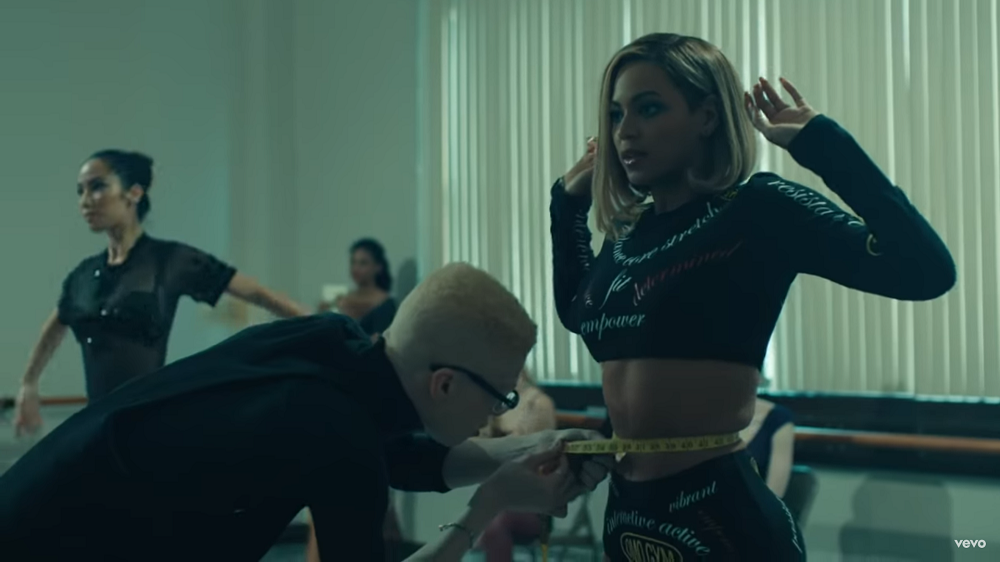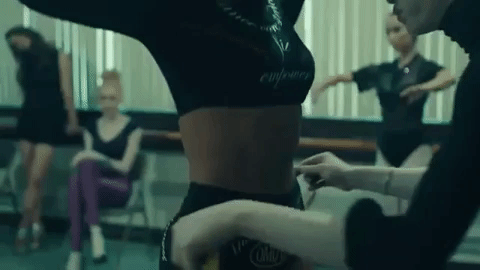
Societal pressures have deemed the beginning of our calendar year as the time to “fix” ourselves. It becomes the only opportunity to magically improve whatever we don’t like, and usually, that lies somewhere in the physical realm. So what does that mean for the most vulnerable generation of women to date? New Year’s Resolutions such as the following:
- This year I’m going to get “in shape”
- This year I’m going to lose 10 lbs
- This year I’m going to snatch that waist and get that hourglass figure
I can be honest here and say that #2 was my resolution for at least three years in a row. I would start the new year off thinking “I need to get my whole life together mentally, physically, and spiritually by midnight and then start the next day off with my perfectly new curated routine (add a green smoothie in the morning plus a raw kale salad for lunch and 1000 burpees after work of course!).”
[Read Related: Men Have Body Image Issues, Too: This is My Naked Truth]
Now don’t get me wrong, setting a goal for yourself and actually accomplishing it is an incredibly gratifying feeling and helps us improve upon our lives. The stress we feel in an effort to reach our goal, from an evolutionary standpoint is actually what helps us get through day-to-day tasks, from brushing our teeth to taking a shower to arriving at work on time.
However, sometimes this initial motivational stress manifests into anxiety, self-loathing, and even depression when we feel like we failed ourselves for not accomplishing what we originally said we would. For example, how many of you have ever missed a workout because you were too tired but then get this unsettling feeling of guilt that either force you to begrudgingly end up at the gym or just makes you feel incredibly bad about yourself for the rest of the night? How many of us are making the same New Year’s resolutions for the second or third time in a row?
But why is it then, as women, that our resolutions in particular always center around something physical? It does not take much investigating to realize that social media comparisons are a driving force for this phenomenon. Our posts scream “look how awesome and happy my life is and look how clear my skin is and how toned my body is without even trying.” We post pictures online because we like the feeling of other people, our “friends,” validating and confirming that we were right, this IS a good picture.
We filter and face tune our selfies so we can look as flawless and as airbrushed as we want. But when did having flaws become the problem? What we’re actually doing to ourselves is putting an intense amount of pressure to adhere to unrealistic physical standards of perfection. And then we punish ourselves and our bodies for not meeting these unrealistic goals.
Have you ever looked into the mirror and hated the reflection that stared back? I have. About three years ago I was diagnosed with Polycystic Ovary Syndrome (PCOS). About six months before I was properly diagnosed, I was living on my own in San Francisco for an internship. All of a sudden my body started to go through these dramatic changes where I was breaking out uncontrollably and experiencing these intense cravings that would cause me to binge eat until I finally felt overly full. I started to feel worse and worse about my appearance.

I remember feeling such a lack of self-confidence in my appearance that I would avoid looking at the mirror all together because I wanted to avoid the sting of disappointment in seeing what waited for me in that reflection. At night I would stay up scrolling through Instagram and go down this rabbit hole of perfect post after perfect post of gorgeous bikini-clad women running around with flawless skin, hair, and nails, without a care in the world. I couldn’t understand why these women had been so genetically blessed but I, on the other hand, was stuck over here with too many flaws to count. I started to experience these bouts of self-loathing which quickly turned into a depression at my body’s refusal to look like these models and anxiety because on top of that I couldn’t even control what was happening internally in my body.
I quickly realized that even though you may spiral into these far-off, unreachable places in your mind, where your inner critic has effectively chased you up an incredibly high tree, no one can get you back down except yourself. There comes a point where you need to connect to your higher self to be able to fight through all the doubts and anxieties that constantly fill your mind. Easier said than done, I know. But there was a point that I just realized that this is the only body I will ever have and I should treat it like the gift that it is. I should feel blessed I’m able to walk, talk, and breathe without issue.
[Read Related: 10 Reasons Why Global T.V. Personality Jameela Jamil Should be Everyone’s BFF]
This is my body positivity. And it is of the utmost importance for every woman to find theirs. We must challenge ourselves to not listen to the constant inner critic and rather, create a new mindset where we actually start complimenting instead of criticizing ourselves. Because at the end of the day; acne, “unsightly” hair, cellulite, stretch marks, dark spots, are all that make us women with something unique to offer. These “flaws” don’t detract from your beauty, rather they add a certain cachet and sense of realness and depth. You are a girl with a voice to be heard and a story to tell and that’s something that no one can take away from you, not even on your worst days.
So let’s make 2019 the year of elevation. Elevating ourselves to a higher place, beyond scales, diets, and detoxing. Let’s make this the year that we say no to any person or any situation, whether it be online or IRL, that makes us feel overly critical of ourselves. Let’s make this the year of everlasting love for ourselves with affirmative thoughts, actions, and TLC for the body that works so hard to provide us with life. Guilt should not be the driving force to help you in your accomplishments, rather inspiration should be. Your body is unique, it is you, it is beautiful and no can ever take that away from you.




